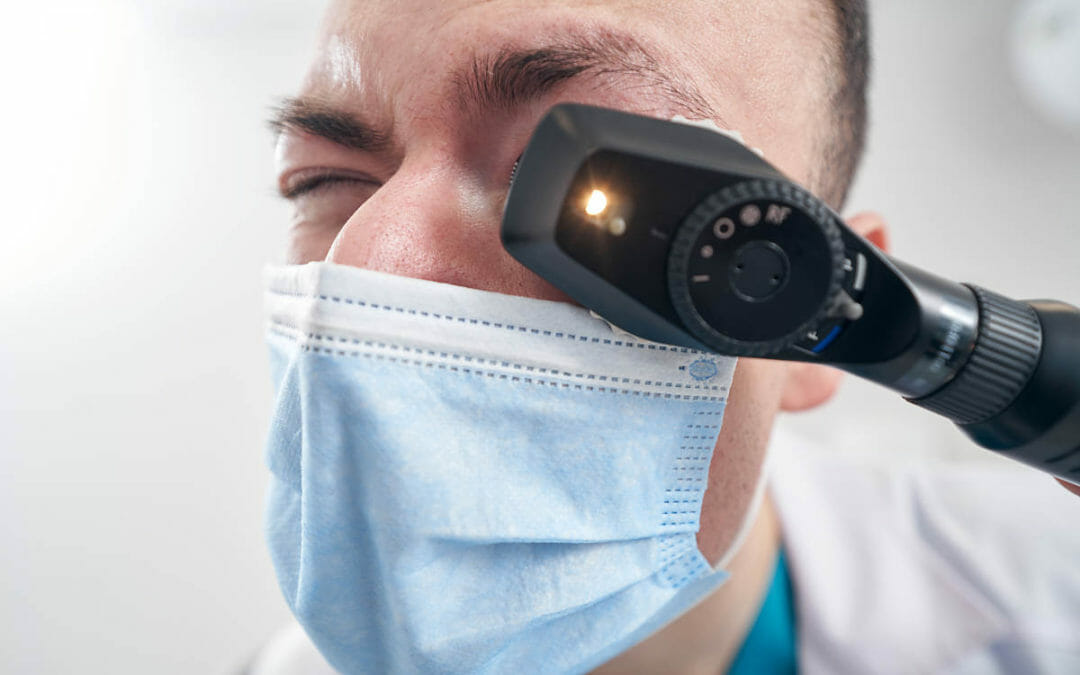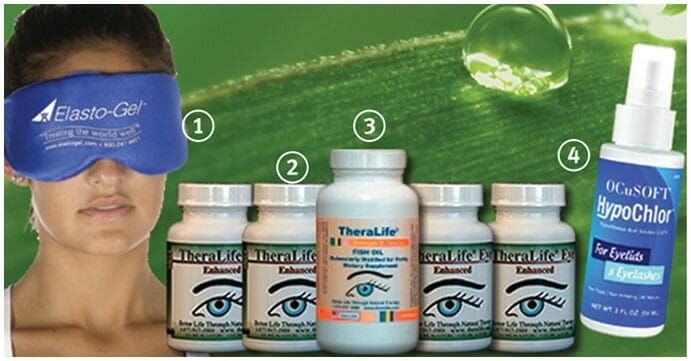Contact lenses provide the ideal solution for many eyeglass prescription problems.
They can be worn at any time.
Without proper cleaning, they can cause eye infections.
People with contact lenses are at higher risk of developing corneal infections or keratitis.
These are known as cornea ulcerations.
The presence of viruses and other parasites in our eyes can lead to keratitis.
In other words, it is easier to get pink eye or conjunctivitis with contacts.
The bacterial infection can originate from the thin membrane that covers the eye surface as well as inside.
Eye infections common to contact lens wearers
Some of the possible serious hazards of wearing contact lenses are corneal ulcers, eye infections, and even blindness.
Putting something in your eyes using your finger can cause eye infections.
Contact lens related eye infections are mainly found in your cornea or eyelids.
Tell me the best way to avoid contact lens related eye infections.
You can avoid the severe infection by washing and drying your hands when handling contacts, storing contact lenses in clean solution daily rather than in water or old solution, and as much as possible, avoiding wearing lenses while swimming or bathing.
People who wear contact lenses are at increased risk for having an infection with acanthamoeba, but it’s usually with certain risk factors.
Acanthamoeba eye infections in contact lens wearers are rare but serious.
Can I wear contact lenses if I have an eye infection?
The symptom may occur when wearing contact lenses until you consult your eye doctor. If so, you’ll be advised a little more if not no more if you’ve decided to stop wearing lenses.
Symptoms of eye infection
Eye infection symptoms include red, eye pain, watering or discharge, light sensitivity, blurred vision or the sensation that a foreign body is in your eye.
Stop wearing contact lenses if you have these symptoms, and contact an eye doctor ASAP.
Sometimes the problem is very serious and needs immediate care.
Take your glasses out. Place the case into the doctor’s hand. This can help them understand what’s wrong with contact lens samples.
These symptoms might also be allergic responses to lenses such as pollen.
Causes
A corneal infection is a condition where the skin has been infected by bacteria, viruses or fungus.
Generally these features are visible on the front eyelids as well.
It contains thick moist membrane covering the inner lid.
Most eye infections can be easily managed by simply using medication.
In less common cases, a retina infection may be serious and requires immediate attention from your eye doctor.
There is a risk of contact lens related eye infection from bacteria in swimming pool water, hot tubs, lakes and the ocean.
Replace your contact lens storage case every 3 months or as directed by your eye doctor.
Can eye infections be prevented?
Avoid These Eye Infections From Bad Contact Lens Habits
For starters, don’t sleep in contact lenses.
Eye diseases often make people feel uncomfortable, as they can inhibit their daily routines, such as driving and working at computers.
You should not be in contact with people with eye diseases that you believe are infectious.
Some diseases are highly infectious, like conjunctivitis.
If you come into contact or encounter anyone whose eyes have been infected with eye infections then hand washing with anti-septic gels is a good idea.
How can I avoid getting an eye infection due to contact lenses?
The best way to avoid contact lens related eye infections is to follow proper lens care guidelines as recommended by your eye doctor.
You can help reduce the risk of infection by carefully cleaning, rubbing and rinsing your contacts, minimizing contact with water.
What should I do if I suspect an infection?
If you notice these symptoms, please seek medical assistance from a specialist eye surgeon or general practitioner.
You should avoid using a medical professional as the failure of treatment can prolong the infection and may result in a serious eye problem.
Often the GP or opticians can request the use of a blood sample to test for an infective disease.
The antibiotics are needed for the treatment of the disease in the intestines.
Bacteria
The normal bacteria that are present on our face or mouth are generally harmless.
Using contact lenses and the little scratches on your eyes may cause serious injury – especially when sleeping.
About 3% of people with Staphylococcus aurea in their noses. It spreads easily by touching your eyes and is very stubborn.
Use sterile contact lenses to prevent eye infections.
Pseudomonium aeruginosa causes a rapidly deteriorating corneal infection. You can have permanent vision loss.
Microbial keratitis is a serious type of eye infection in contact lens wearers, which can lead to blindness or the need for corneal transplant in the most severe cases
Types of Microbial Keratitis :
Bacterial Keratitis Fungal Keratitis Parasitic/Amebic Keratitis Viral Keratitis
Symptoms of Eye Infection Irritated, red eyes, worsening pain in or around the eyes—even after contact lens removal.
- Light sensitivity
- Sudden blurry vision
- Unusually watery eyes or discharge
Prevention Microbial keratitis can usually be prevented through healthy habits and proper care of contact lenses and supplies.
Viruses
The herpes simplex virus
Both the kind that causes cold sores and the kind responsible for the STD — can cause keratitis.
You can transfer it if you touch an active herpes sore and then touch your eye.
Viruses that cause upper respiratory infections and the chickenpox virus can also infect your cornea.
A herpes simplex infection is transferable when touching the active sores of the herpes infection or touching their cornea.
Chicken Pox
Infection from a viral infection including chickenpox virus can affect your iris.
Conjunctivitis
Pinkeye usually originates from cold viruses. It may also be spread through the eyes of another person.
Hopefully you will not suffer from viral infections, you can alleviate these effects using cooling compresses and artificial tears.
The doctor will recommend eyedrop steroid treatment for pain and inflammation.
Parasites
Fungal eye infections –
Fungal keratitis is more common in warmer climates.
Tiny-celled creatures called “acanthamos” live inside water such as baths and showering areas.
They can cause infections to your eyeslid by placing contact lenses on your eyes while underwater.
When wearing contacts, avoid opening your eyes in an enclosed pool, where parasites are commonly found.
Parasites are primarily an explanation why you should never have contact with water for washing or storing them for longer.
Keratitis caused by parasites are quite hard to treat. It is possible that cornea transplant is necessary.
Possible complications
Occasionally eye problems may cause additional damage if undiagnosed.
In autoimmune diseases, the eyes may develop uveitis, as well as dacryosteosis. It also causes inflammation and blocks tear glands of the eye, causing dacryocytostitis.
Depending upon where the infection originates, corneal ulceration can appear as abscesses or ulcers.
If left untreated, corneal ulcers can cause serious vision problems.
The infection eventually reaches broader parts of the eye, and causes eye diseases such as endophthalmitis.
For more information about the risks associated with contact lenses, go to: Advice for Patients With Soft Contact Lenses: Acanthamoeba Keratitis Infections Related to Complete® MoisturePlus Multi Purpose Contact Lens Solution External Link Disclaimer Advice for Patients with Soft Contact Lenses.
How are eye infections treated?
The quick treatment for an eye infection usually helps it heal quickly if it causes bacteria to react to antibiotics.
In some instances, a viral infection is more difficult to diagnose or treat.
The treatment of serious viral infections is often accompanied by steroid injections or antibiotic eye drops.
In many instances GPs and opticians may recommend oral treatments.
Treatment usually involves antibiotics as well as antiviral or anti-fungal medications.
Steroid eye drops may also be given to reduce inflammation.
In severe cases, a corneal transplant may be needed to restore vision.
If treatment is not administered, there may be blindness or even total loss of the eye.
Treatment of dry eyes caused by contact lenses
References
Contact Lens Risks external icon References Chalmers RL, Keay L, Long B, Bergenske P, Giles T, Bullimore MA. Risk factors for contact lens complications in US clinical practices. external icon Optom Vis Sci. 2010;87(10):725-35





